By Ward W. Brien

Rifle scopes, spotting scopes and binoculars share a similar purpose. The optics are designed to magnify the image of an object that you are looking at. They accomplish this task in a specific manner, gathering and transmitting the light (photons). Lenses are designed to focus or concentrate a large amount of light into a narrow beam of light through the center of the lenses so that upon exiting, it will match the size of your pupil. This is why the shape of the lenses and proper eye relief (the distance from the ocular lens to your pupil) are so very important. If the beam of light is larger or smaller than your pupil, you will reduce the field of view or lose your sight picture altogether. The lenses must be precisely placed in proper array or the centrally-focused beam of light will not be produced. Likewise, the “milliradian” or “minute of angle” reticle must also be properly positioned within the erector tube assembly or it will be out of calibration. Clarity, exactness and accuracy must exist.
When light interfaces with a medium such as glass or water, it follows the nature of light. There are mathematical models utilized to describe this “nature of light” that are based on a set of principles. One of these principles is “Snell’s Law of Refraction,” which describes what the light does when it penetrates the surface.
Think about what occurs when a spoon is placed in a glass of water. The deeper the spoon travels into the water the larger the linear offset, or the larger the spoon appears to bend even though the angle of the spoon is constant.
Due to Snell’s Law, the photons bend at different angles when encountering each individual lens because the lenses are designed with different indexes of refraction. The shape and purposes of the multiple lenses are an attempt to correct for the negative effects by constraining and/or guiding the path of the photons. A convex shaped lens will cause the light to be focused inward toward the center, producing an accurate exiting “focal point,” or where the light’s path meets. In contrast a concave lens, which is hollowed or rounded inward like a bowl, will cause the light to spread, bending outward and away from the lens’ center.
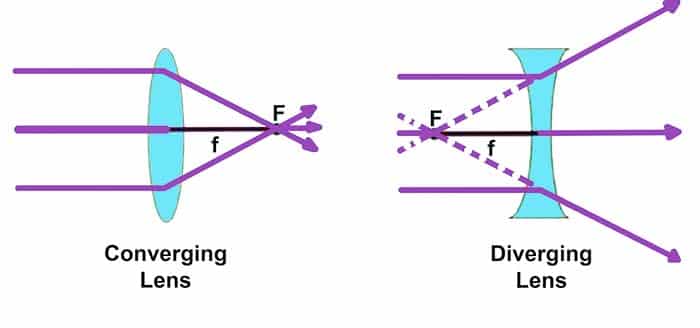
If the shooter moves his or her eye away from the constrained or guided beam of light, they are countering the optical design of the optics. When you move your eye away from the optical center (center of the reticle), you are changing all of the incident and refractive angles of every single lens in the stack; everything that the scope has been designed to accomplish has been corrupted. These negative results of accuracy are caused in part by the optical effects of “coma aberration” and are why the optics manufacturer Hensoldt builds their rifle scopes true to science with small, perfectly calibrated milliradian (Mil-Dot) reticles. Hensoldt’s reticles occupy less than one third of the optical center of the viewing portion of the lens. See Image 4.
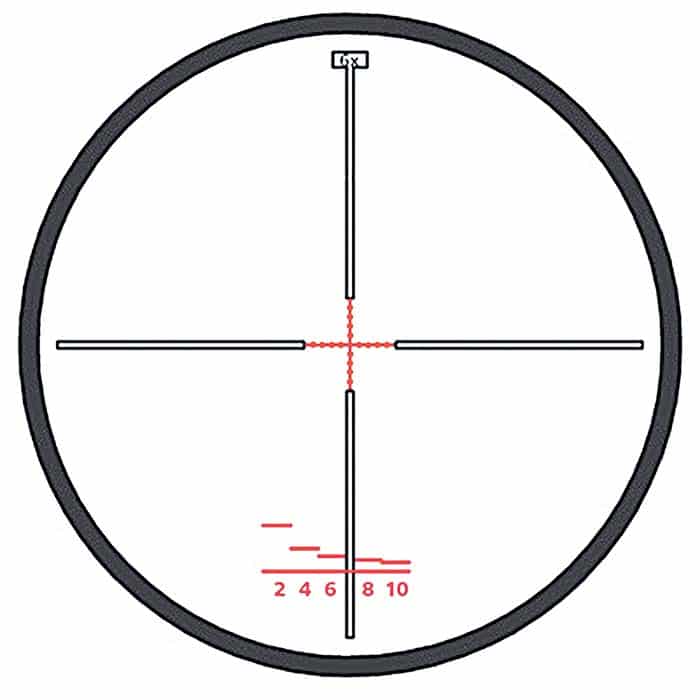
The image that you are looking at in Image 5 is a milliradian reticle that is being aimed at a tall ladder paper target. The tall ladder target is utilized to calibrate your scope, assuring that its click adjustments are accurate. However, if you look closely at the reticle, you will notice that the third mil mark, left, right, and down, does not line up with the mil marks on the target. As you move lower, or right and left, you will notice that the additional mil marks of the reticle progressively move farther and farther away from the mil marks on the target. This is due to Snell’s Law of Refraction and it’s why you must never use the hold over method of aiming when aiming outside one third of the optical center of the viewing portion of the center of the lens.
If you refer to the book Principles of Optics by Max Born and Emil Wolf, they discuss optical errors and a class of aberrations called “Seidel Aberrations,” of which there are five. These five “Seidel Aberrations” are as follows: spherical, coma, astigmatism, curvature of field and distortion.
It is the coma aberration, due to Snell’s Law of Refraction, that states that when your eye or pupil is moved off of the center of the viewing axis by more than one third of the visual field of view of the lens, that the image becomes distorted and appears to be displaced. This is why you will encounter a high vertical miss as well as an off-center horizontal miss when utilizing the holdover method of aiming. The error/miss will be significantly magnified when aiming up or down on angles because the lenses will be positioned at a greater obtuse or acute angle. This produces an increased incidence of light onto the lenses that will cause the light to bend at a steeper downward angle on the back side of the lenses. This in turn causes the distorted image to be greatly magnified. Again, for these reasons, it is imperative that you keep your eye in the optical center of the viewing portion of the lens and use your turrets.
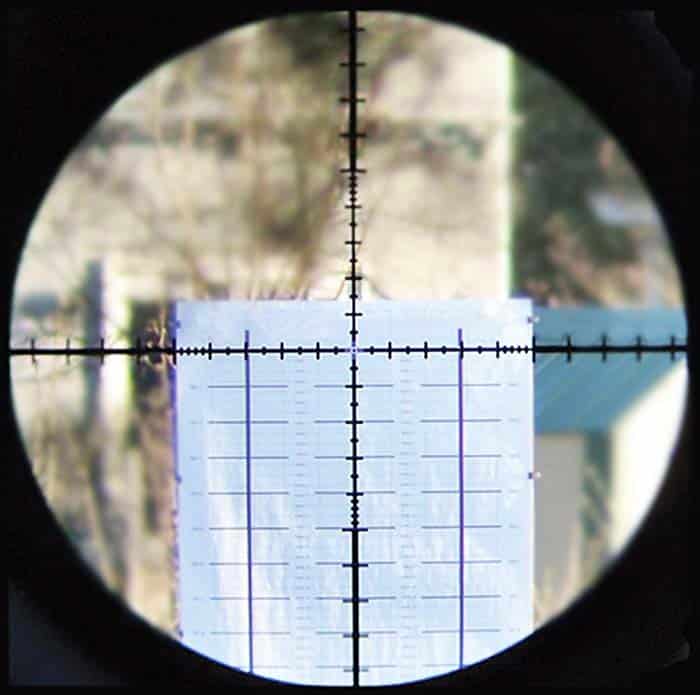
Some people have tried to excuse away the use of turrets, suggesting that the click value isn’t precise. The solution, which has been used for years, is to simply calibrate your scope. As with all precision machines, mills, lathes and screws, the further into the adjustment, the more backlash may be encountered. Backlash is caused by the pitch angle of the screw’s threads and the gap in between them. There is a simple remedy for backlash. Simply adjust your turret(s) four clicks beyond where you want to be, and then return to the correct setting.
Correctly shaped lenses (a combination of convex, concave and others) will produce a small beam of light that is colinear with the centerline of the optical stack. Upon exiting, the beam of light will theoretically be parallel and match the size of your pupil.
Obviously, there is much more here than “meets the eye,” as the optic(s) creates a clear, non-chromatic aberration (to focus all colors to the same point).
Eyes are an extension of the brain. Each eye has approximately one hundred and twenty million (120,000,000) photoreceptive rods, cones and ganglion cells. (A ganglion cell is a mass of nerve tissue containing cell bodies of neurons). However, to put this in layman’s terms, these photoreceptive cells (rods and cones) are what receives the light/image(s) and transfers them to the brain. Interestingly enough, men’s and women’s eyes are uniquely different.
A potential Mountain Shooting Center student once asked if he and his wife could attend a course and share the same rifle. I said that they could attend the course, although could not share the same rifle. This was a deal breaker for me because the husband did not want to spend additional funds to set up a second rifle. So, what’s the difference?
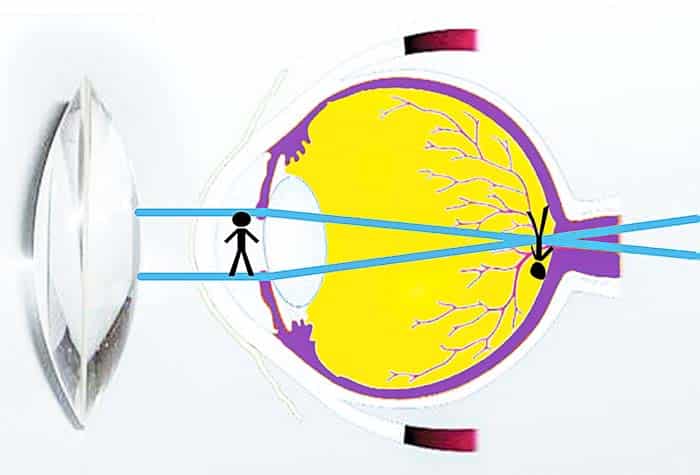
Women have more photoreceptive cells then men do. The reason for this is that men’s and women’s eyes are designed for different tasks and purposes.
Men’s eyes are designed to see fine movement at long distances. Women’s eyes are designed to be able to see many, many more colors and shades of colors than men can see and to excel at close distances. In fact, when a man looks at a bouquet of red roses, he sees only one color—red. However, when a woman looks at a bouquet of red roses, every rose is a different shade of red. She sees an entirely different spectrum of colors!
When it comes to men, their pupils can dilate to an average of about 6 millimeters during low light conditions. Women’s pupils can dilate to eight—or even nine—millimeters during low light conditions. In fact, women’s pupils are dilated larger than men’s are most all of the time, which is why they may often contract headaches (and wearing sunglasses is a must).
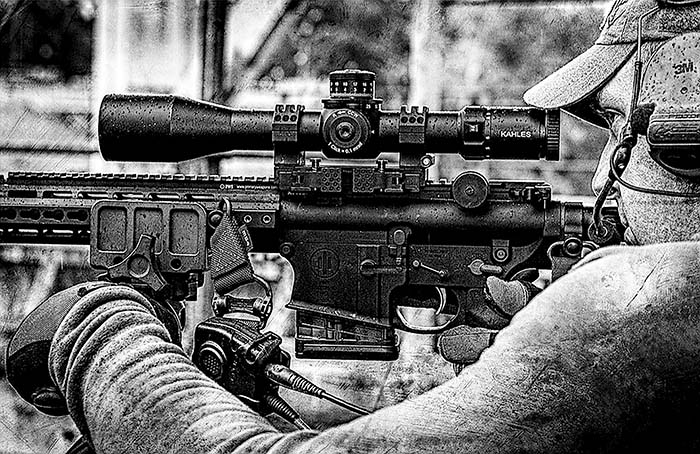
Objective Lenses and Eye Relief
Rifle scope objective size is not designed by happenstance. Based upon a factor of six, (for men), which is the average pupil size of a young man in low or reduced light conditions (6mm pupil size). The objective size of the rifle scope or other optics determines the maximum magnification setting that can be utilized to promote maximum light transmission. This is because the exiting light size or “exit pupil” diameter emitted from the ocular lens of the scope must match the size of your pupil.
To accomplish this, the relationship is as follows: objective size / pupil size = maximum magnification setting for maximum light transmission.
For example, based upon a 6mm pupil size, a 40mm objective can transmit maximum light in a low light condition when the magnification is set to 6.6 power. A 44mm objective can transmit maximum light in a low light condition when the magnification is set to 7.3 power. A 50mm objective transmits maximum light in a low light condition when the magnification is set at 8.3 power and a 56mm objective can transmit maximum light in a low light condition when magnification is set to 9.3 power.
These numbers change for women’s eyes. For example, based upon an 8mm pupil size, a 40mm objective can transmit maximum light in a low light condition when the magnification is set to 5 power. A 44mm objective can transmit maximum light in a low light condition when the magnification is set to 5.5 power. A 50mm objective transmits maximum light in a low light condition when the magnification is set at 6.25 power and a 56mm objective can transmit maximum light in a low light condition when the magnification is set to 7 power.
When setting up your scope, it is imperative to set the eye relief specifically for either a man or a woman. Eye relief is how far the exit pupil floats behind the ocular lens. The eye relief for a man will be farther away from the ocular lens than for a woman. This situation of eye relief distance also brings to light the topic of length of pull into consideration and again, this is why men and women should not share the same rifle scope setup.
So that’s a little bit of the science behind the shooting.
| This article first appeared in Small Arms Review V25N8 (October 2021) |












